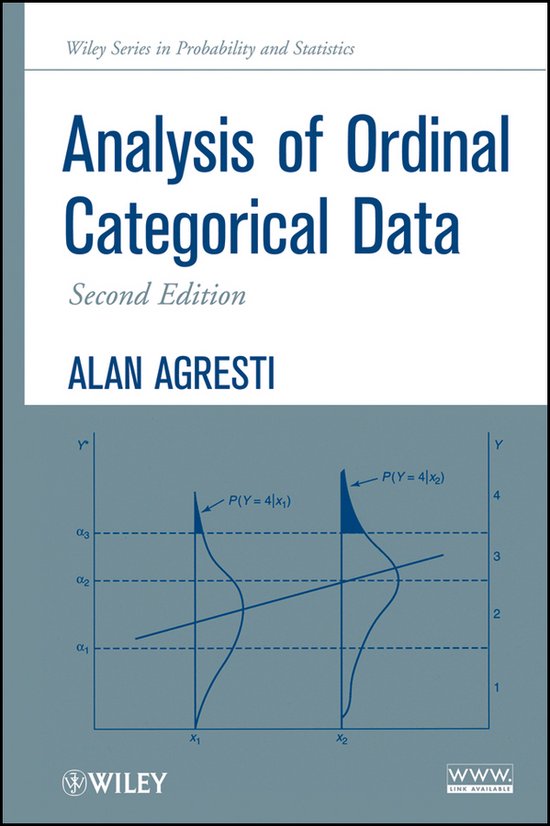Analysis of ordinal categorical data

2 - 3 weken
Statistical science s first coordinated manual of methods for analyzing ordered categorical data, now fully revised and updated, continues to present applications and case studies in fields as diverse as sociology, public health, ecology, marketing, and pharmacy.
Praise for the First Edition:
"The author has a fluent, easy-to-read style, and well-chosen interesting material to present and illustrate the ideas to the newcomer and the old hand alike."
—Journal of the Royal Statistical Society
Categorical data having ordered categories are common in practice, especially in applications throughout the biomedical and social sciences. Thoroughly updated to reflect developments since the publication of its predecessor, Analysis of Ordinal Categorical Data, Second Edition presents a comprehensive survey of methods for analyzing ordinal categorical data, complete with coverage of the most recent research.
The author highlights various modeling techniques, including cumulative logit models with and without proportional odds structure, adjacent-categories logit and continuation-ratio logit models, stereotype models, association models for ordinal odds ratios, and models for clustered ordinal data. Additional features of this Second Edition include:
A new chapter on marginal models for multivariate ordinal responses, using maximum likelihood and generalized estimating equations for model fitting
A new chapter on random effects models for clustered ordinal data
A new chapter on Bayesian approaches for analyzing ordinal data
Models and order-restricted inference methods for various types of ordinal odds ratios, including local odds ratios, cumulative odds ratios, and global odds ratios
Presentation of non-model-based methods, such as nonparametric rank methods that also apply to ordered categorical data
Each chapter concludes with notes on relevant research literature as well as exercises that allow readers to test their comprehension of the presented concepts. A detailed appendix discusses the use of the latest software such as SAS, R, SPSS, and Stata, and the book's related Web site provides further instructions for the use of these software packages along with complete data sets.
Analysis of Ordinal Categorical Data, Second Edition is an excellent book for courses on categorical data analysis at the upper-undergraduate and graduate levels. It is also an invaluable resource for researchers and practitioners who conduct data analysis in the areas of public health, business, medicine, and the social and behavioral sciences.
Statistical science’s first coordinated manual of methods for analyzing ordered categorical data, now fully revised and updated, continues to present applications and case studies in fields as diverse as sociology, public health, ecology, marketing, and pharmacy. Analysis of Ordinal Categorical Data, Second Edition provides an introduction to basic descriptive and inferential methods for categorical data, giving thorough coverage of new developments and recent methods. Special emphasis is placed on interpretation and application of methods including an integrated comparison of the available strategies for analyzing ordinal data. Practitioners of statistics in government, industry (particularly pharmaceutical), and academia will want this new edition.
- 1 Bekijk alle specificaties
Taal: en
Bindwijze: Hardcover
Oorspronkelijke releasedatum: 14 mei 2010
Aantal pagina's: 424
Illustraties: Nee
Hoofdauteur: Alan Agresti
Hoofduitgeverij: John Wiley & Sons Inc
Editie: 2
Extra groot lettertype: Nee
Product breedte: 163 mm
Product hoogte: 28 mm
Product lengte: 246 mm
Studieboek: Nee
Verpakking breedte: 165 mm
Verpakking hoogte: 244 mm
Verpakking lengte: 27 mm
Verpakkingsgewicht: 725 g
EAN: 9780470082898